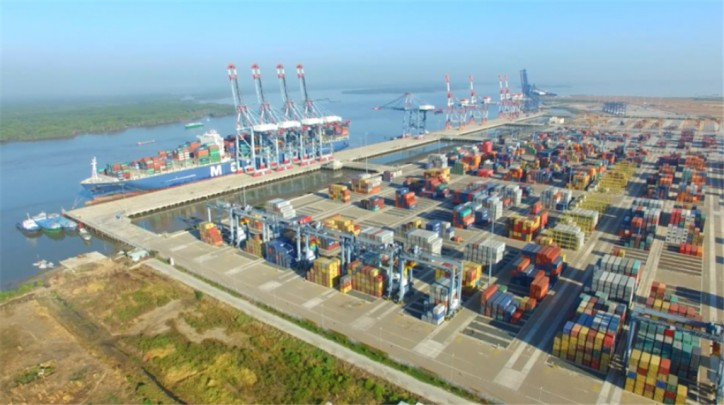Despite difficulties in the global shipping market, joint-venture ports between Vietnam National Shipping Lines (Vinalines) and its foreign partners achieved good numbers in this year’s first 10 months, signaling an upward trend after years of poor performance.
A source from Vietnam’s largest shipping company (Vinalines) told VIR that total container throughput shipped via Cai Mep International Terminal (CMIT) reached nearly 1.1 million twenty-foot equivalent units (TEU) during the year’s first 10 months, up over 10 percent on-year.

Located in the Cai Mep-Thi Vai area of the southern province Ba Ria-Vung Tau, the port – a joint venture between Vinalines and Denmark’s APM Terminals – saw its revenue rise over 20 per cent on-year to VND455.4 billion ($20.7 million).
With ongoing improvements, CMIT has a target throughput of 1.33 million TEU this year, which would give the firm revenue of VND528 billion ($24 million) – up from a throughput of 1.2 million TEU and VND492.8 billion ($22.4 million) in revenue last year.
Big business improvements were also witnessed from January-October at Cai Lan International Container Terminal (CICT), located in the northern province of Quang Ninh. This joint venture has US-based Carrix – the parent company of SSA Marine – as a partner.
Unlike in previous years when CICT had to handle goods in bulk to survive, the port reported a throughput of 62,760 TEU for this year’s first 10 months, easily surpassing its yearly target of 19,838 TEU.
So far, CICT has made VND207.3 billion ($9.42 million) in revenue, fulfilling 98.1 per cent of its yearly target. This is a good sign of progress, and the figure is well ahead of last year’s VND176.22 billion (over $8 million).
SP-PSA, a joint-venture port between Vinalines and Singapore-based PSA, saw its volume of bulk goods increase to over 1.5 million tonnes in the year’s first 10 months, while the figure was 1.54 million tonnes last year.
The port, which is also located in the Cai Mep-Thi Vai area, fetched revenue of VND84.68 billion ($3.85 million), up from $3.07 million in 2016.
With business performance that often ranks lower than other jointly invested ports, SSIT – a joint venture between Vinalines and SSA Marine – witnessed solid growth in its goods volume in this year’s first 10 months.
SSIT, which is also in the Cai Mep-Thi Vai area, handled nearly three million tonnes of goods, compared to 3.8 million tonnes in total in 2016 after doubling the throughput of 2015.
Last year, after enduring a number of slow years, these four ports continued to perform better, thus contributing to a brighter picture for Vinalines’ port business, which saw its pre-tax profit climb 58 per cent to VND923 billion ($41.95 million) so far this year.
“Their good performance is attributed to an increase in goods volume. We expect that the situation will be better when infrastructure development at SSIT is completed in June or July 2018,” a senior official of Vinalines, told VIR.
At present, foreign joint-venture ports are waiting for approval from relevant ministries, including the Ministry of Natural Resources and Environment, to dredge the channels in the area to a depth of 15.5 metres from their current 14m, which will enable the ports to handle bigger vessels.
These are positive business results amid a shaky climate for global shipping businesses that are still fighting uphill battles like rising fuel prices – up 30-50 per cent on average from the same period last year.
Many leading global shipping lines suffered huge losses, while many others had to either merge, join alliances, or declare bankruptcy.
Maersk Lines acquired Harmburg Sud, and French line CMA CGM acquired NOL/APL. Meanwhile, China Cosco and CSCL were merged into COSCO Shipping. Three leading shipping lines, NYK, MOL, and Kline, underwent mergers.
Source: Vinalines